You are here
Federal Deficit and Debt: May 2022
Every month the U.S. Treasury releases data on the federal budget, including the current deficit. The following contains budget data for May 2022, which was the eighth month of fiscal year (FY) 2022.
Current Federal Deficit
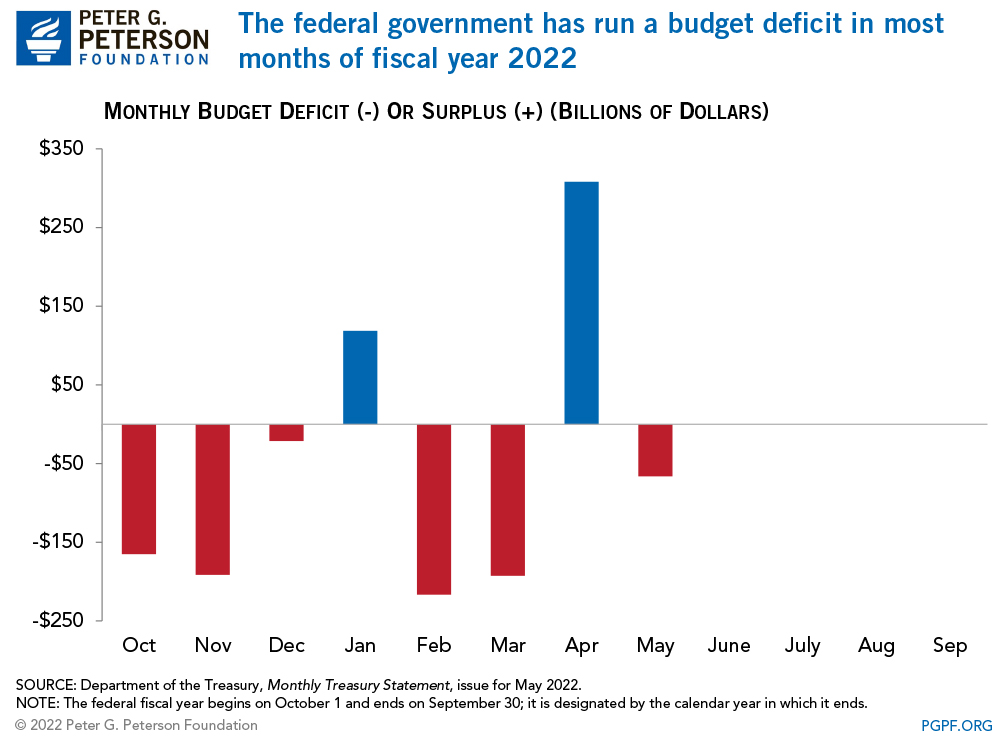
- Federal Budget Deficit for May 2022: $66 billion
- Federal Budget Deficit for May 2021: $132 billion
The federal government ran a deficit of $66 billion in May 2022, an improvement of $66 billion from the deficit of $132 billion that was recorded in May 2021. That improvement was reflected in outlays that were $140 billion lower in May 2022 than they were in the same month last year, and despite the fact that revenues were $75 billion lower. The decrease in outlays was primarily due to the expiration of pandemic-related relief programs that boosted spending in 2021.
Because May 1 fell on a weekend in both 2021 and 2022, certain federal payments were shifted forward into April in both years, leading to decreased outlays. Without such shifts, the deficit for May 2022 would have been $131 billion and the deficit for May 2021 would have been $192 billion – or an improvement of $61 billion.
Cumulative Federal Deficit
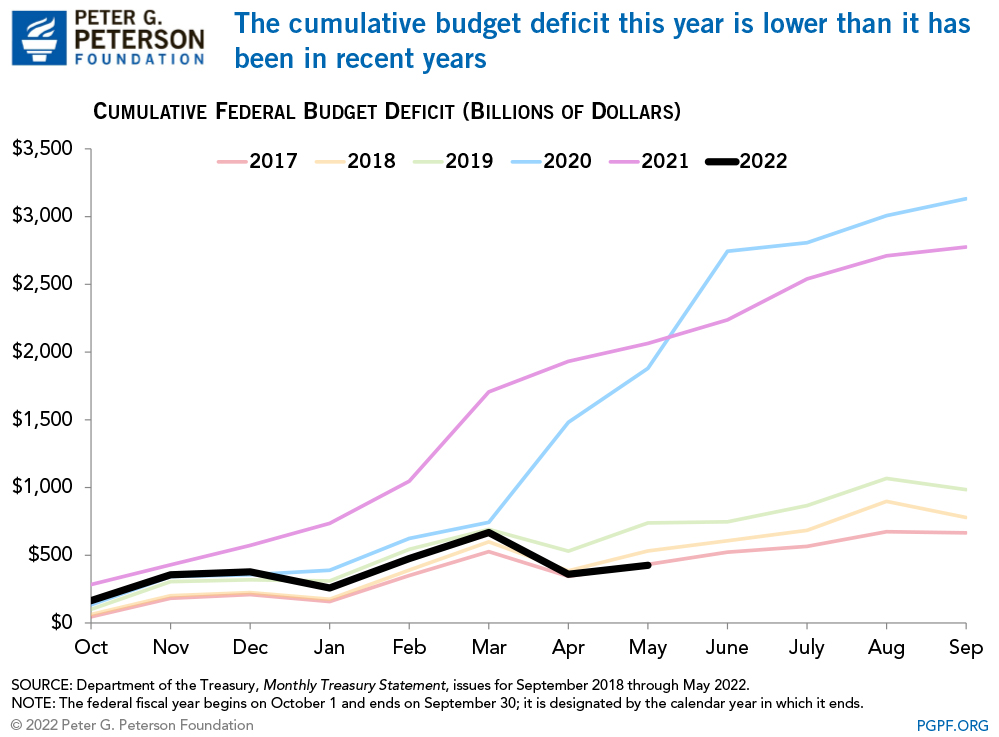
- Cumulative FY22 Deficit Through May 2022: $426 billion
- Cumulative Budget Deficit Over Same Period in FY21: $2,064 billion
The cumulative deficit for the first eight months of FY22 was $426 billion (or around 80 percent) lower than it was through the first eight months of FY21, reflecting a $870 billion decrease in outlays and a $768 billion increase in revenues.
The increase in revenues was due to stronger economic growth, leading to income growth, and in turn larger collections of individual income, payroll, and corporate income taxes. CBO notes that total revenue collections in FY22 are likely to be $4.8 trillion, which would be a year-over-year increase of 19 percent.
Meanwhile, the large decrease in outlays is due to the waning federal response to the COVID-19 pandemic. The lack of recovery rebates in the first eight months of FY22, compared to two separate rounds of such payments during the first eight months of FY21, accounts for almost half of the decline in outlays between the two years. Lower spending on unemployment compensation and programs administered by the Small Business Administration also account for a significant share of the difference.
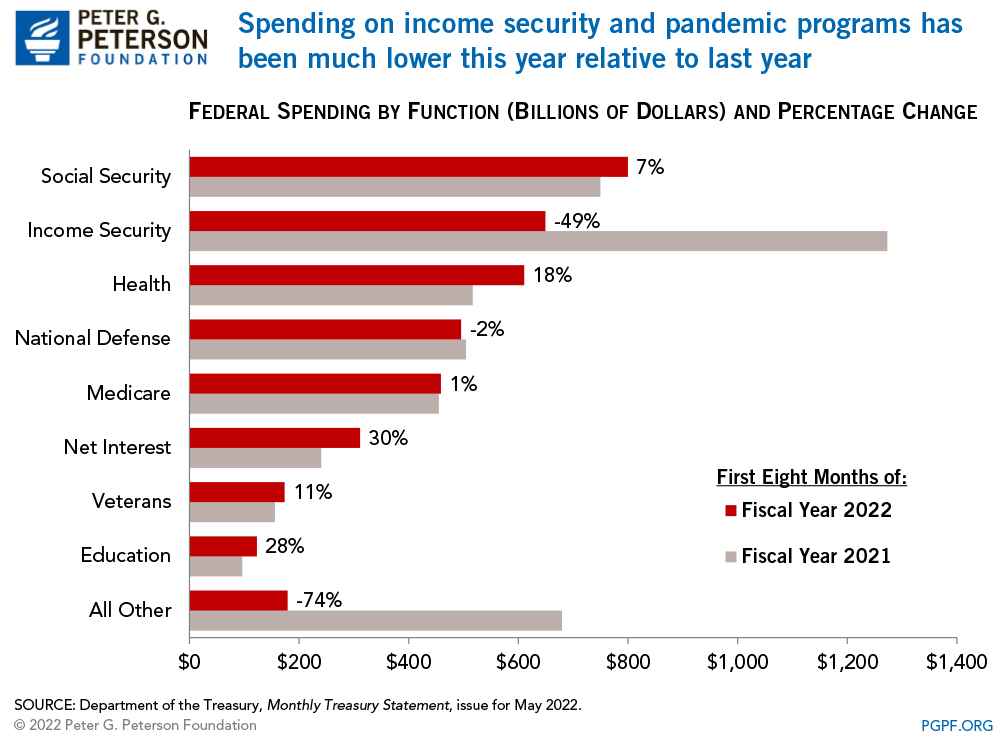
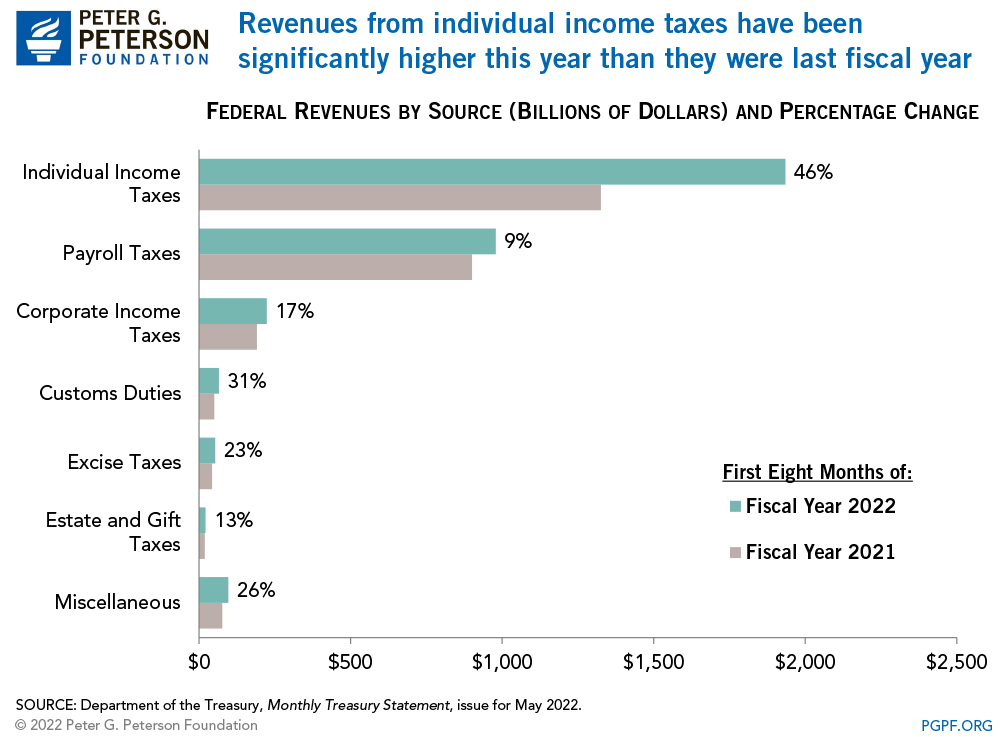
National Debt
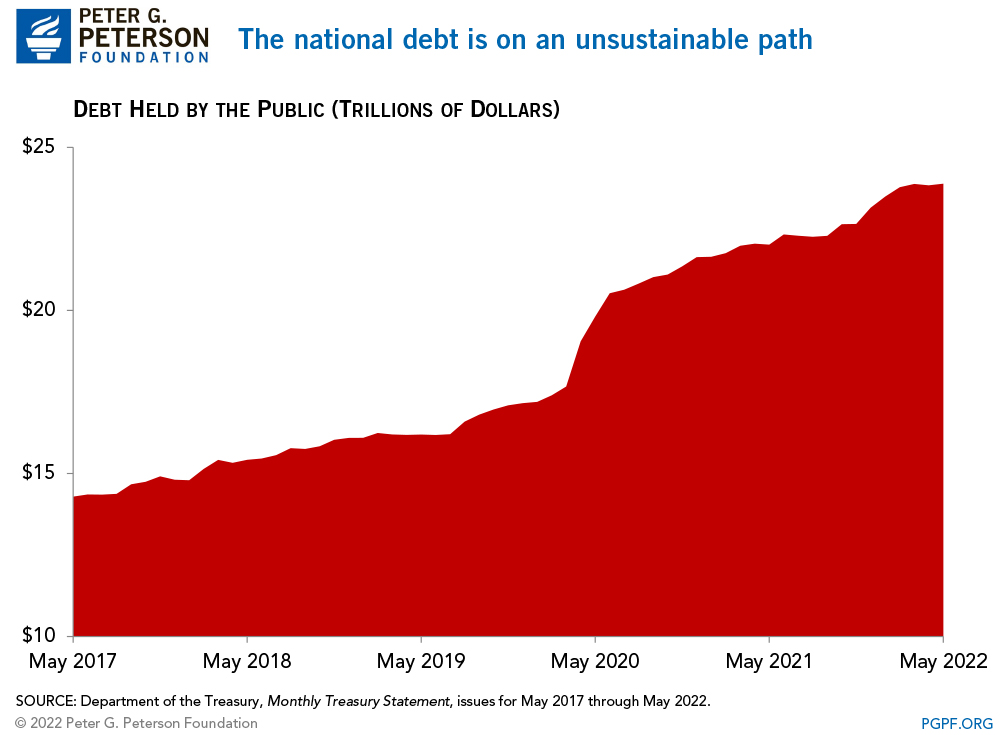
- Debt Held by the Public at the end of May 2022: $23.9 trillion
- Debt Held by the Public at the end of May 2021: $22.0 trillion
Since the onset of the COVID-19 pandemic, debt held by the public has increased by 35 percent, and is projected to grow significantly over the next 10 years. Now that the worst of the COVID-19 pandemic is behind us, it is time to chart a comprehensive path to a sustainable fiscal future.
